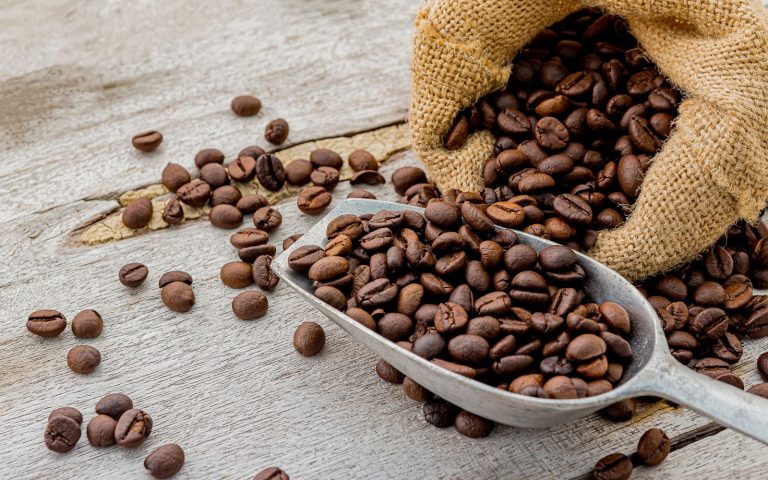Key Takeaways
- Arabica coffee futures saw modest gains on Friday, influenced by a steep decline in ICE arabica coffee inventories to a 19.5-month low.
- Robusta coffee prices experienced a significant drop due to favorable weather in Vietnam’s coffee-growing regions and increased export forecasts.
- Earlier in the week, coffee prices retreated to two-week lows amidst forecasts of rain in Brazil and speculation about potential US tariff reductions on Brazilian coffee.
- Concerns over dry conditions in Brazil and the potential impact of a La Niña weather system on the arabica crop provide underlying support for arabica coffee prices.
- Global coffee exports have shown a slight increase, suggesting adequate supply, while production forecasts indicate a rise in overall coffee output for the 2025/26 season.
Coffee Market Dynamics: Mixed Signals for Arabica and Robusta
On Friday, December arabica coffee futures (KCZ25) closed with a slight gain of +0.05 (+0.01%), while January ICE robusta coffee (RMF26) settled lower, down -101 (-2.18%). The coffee market presented a mixed performance, with arabica finding support from dwindling inventories and robusta facing pressure from increased supply outlooks.
Arabica coffee managed to recover from earlier trading losses, chalking up modest gains. This recovery was largely attributed to a significant drop in ICE arabica coffee inventories, which reached a 19.5-month low. Conversely, robusta coffee prices were hammered by reports of heavy rains in Vietnam’s key coffee-growing areas, which bolstered the outlook for the country’s coffee crops. Adding to the bearish sentiment for coffee prices on Friday was a stronger U.S. dollar, with the dollar index (DXY00) rallying to a 2.75-month high, making dollar-denominated commodities like coffee more expensive for international buyers.
Factors Influencing Arabica and Robusta Prices
Earlier in the week, coffee prices experienced a downturn, falling to two-week lows. This decline was fueled by forecasts of rain in Brazil’s major coffee-growing regions, which promised some relief from recent dry conditions. Somar Meteorologia reported that Brazil’s primary arabica coffee-producing area, Minas Gerais, received minimal rainfall (0.3 mm) during the week ending October 24, a mere 1% of the historical average. This dry spell had previously supported arabica prices.
Additionally, speculation surrounding the potential lifting of a 50% U.S. tariff on Brazilian coffee added downward pressure on arabica prices. Reports indicated that Brazil’s President Luiz Inacio Lula da Silva had a constructive meeting with President Trump, suggesting a possible resolution to trade issues within days. Such a development could significantly impact coffee import dynamics.
Robusta Supply Surges Amidst Favorable Weather
Robusta coffee continues to face pressure from an anticipated increase in supplies from Vietnam, the world’s largest producer of robusta. Data from the Vietnam National Statistics Office showed a robust increase in coffee exports for January-September 2025, up 10.9% year-over-year to 1.230 million metric tons. Projections for the 2025/26 coffee production season in Vietnam indicate a potential rise of 6% year-over-year to 1.76 million metric tons, or approximately 29.4 million bags, marking a four-year high.
The Vietnam Coffee and Cocoa Association (Vicofa) further corroborated this outlook, suggesting that Vietnam’s coffee output for 2025/26 could be 10% higher than the previous crop year, provided weather conditions remain favorable. This anticipated surge in Vietnamese robusta supply is a significant bearish factor for the commodity.
Impact of Inventory Levels and Weather Patterns
💡 Shrinking ICE coffee inventories provide a supportive backdrop for arabica prices. The imposition of a 50% tariff on U.S. imports from Brazil has led to a substantial drawdown in ICE coffee inventories. On Friday, ICE-monitored arabica inventories dropped to a 19.5-month low of 431,728 bags, while ICE robusta coffee inventories reached a 3.5-month low of 6,077 lots. American buyers are reportedly avoiding new contracts for Brazilian coffee due to the tariffs, tightening U.S. supplies, especially considering Brazil accounts for about a third of America’s unroasted coffee imports.
Last Thursday, arabica coffee futures surged to an 8.5-month nearest-futures high, driven by concerns over excessive dry conditions in Brazil during the critical flowering period for coffee trees. These conditions threatened the 2026/27 coffee crop. The Bloomberg Brazil Weather Analysis highlighted an intense drought in Brazil’s coffee-producing regions, with Minas Gerais recording only about 70% of its average rainfall over the preceding month.
⚡ Coffee prices also found support from the National Oceanic and Atmospheric Administration’s (NOAA) increased probability (71%) of a La Niña weather system forming in the southern hemisphere between October and December. Such a system could bring excessive dry weather to Brazil, potentially harming the 2026/27 coffee crop. Brazil is the world’s leading producer of arabica coffee.
Global Supply and Production Outlooks
📊 Global coffee exports for the current marketing year (October-August) have shown a modest increase of 0.2% year-over-year, reaching 127.92 million bags, according to the International Coffee Organization (ICO). This indicates generally adequate export levels and supplies.
Conab, Brazil’s crop forecasting agency, revised its Brazil 2025 arabica coffee crop estimate downward by 4.9% to 35.2 million bags on September 4, from a previous May forecast of 37.0 million bags. Conab also reduced its total Brazil 2025 coffee production estimate by 0.9% to 55.2 million bags, down from the May estimate of 55.7 million bags.
The USDA’s Foreign Agriculture Service (FAS) projected in June that world coffee production for 2025/26 would rise by 2.5% year-over-year to a record 178.68 million bags. This includes an anticipated 1.7% decrease in arabica production to 97.022 million bags and a significant 7.9% increase in robusta production to 81.658 million bags. FAS forecasts Brazil’s 2025/26 coffee production to increase by 0.5% year-over-year to 65 million bags, while Vietnam’s output is expected to climb by 6.9% year-over-year to a four-year high of 31 million bags. Ending stocks for 2025/26 are forecasted to increase by 4.9% to 22.819 million bags.
Final Thoughts
The coffee market remains sensitive to weather patterns, inventory levels, and trade policies. While a strong dollar and robust Vietnamese supply weigh on robusta, dwindling arabica inventories and weather concerns in Brazil create a complex price environment.

